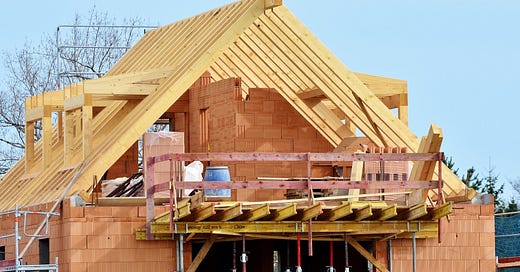A multi-pronged, collaborative approach to creating more affordable housing
When home prices rise as high as they are now, governments options for helping are limited and require cooperation with builders and non-profits
EDITOR’S NOTE: This piece is a part of our #GovernorGoals series. Learn more about it here. Send your goals on one of the selected topics to theway@or360.org for potential publication.
According to Zillow's home value index, Oregon's housing prices have increased 19.7% in the past year. In the past 10 years, housing prices have exploded by more than 130%. Increased regulations, high permitting, and utility costs have pushed away investors. The resulting consequences are devastating: a non-existent supply of housing that is unable to meet high demand.
In the last decade, government officials and legislators have been trying to make housing more affordable and equitable. In doing so, they have only crippled the free market and amplified existing issues.
In current-day Oregon, fewer minorities can afford a house than at any time in the past. State and local counties have long pushed for low income, BIPOC, and first-time home buyer grants. These are vital programs for our community, but when housing prices are this high, the government's ability to help becomes limited. With rising prices, a dollar can only be stretched so far and in return limits the number of people who can be helped.
As governor, I will work to create affordable housing for all. In order to do so, I have laid out three clear objectives for our state government: Increase housing supply, decrease housing regulations, and reform government housing.
1. Increase Housing Supply
Zoning changes
Oregon's beauty is also its biggest obstacle for housing. We have hills, mountains, and rivers that constrain our cities.To solve this, we must build taller and denser housing infrastructure in our urban suburbs.
Rather than just pushing urban growth boundaries outwards, we need to revitalize single-story retail properties. Cities and counties should be courting the next high-rise mixed developments to modernize their downtown corridors. Accordingly, we should prioritize underground parking to maximize land use to the fullest, while also ensuring mass transit is available to these urban centers.
Housing for the middle class
Currently, we only incentivize building low-income housing. This further creates a divide and leaves the middle class behind. The middle class needs affordable housing, too.
Incentives should be provided through state and county tax breaks as well as permitting costs. Projects focusing on the middle class and affordable housing should be streamlined. We need to shorten the public comment period, allow for congruent review by separate agencies or boards, and allow licensed professionals to self certify plans. We need housing now, not after years of comment and reviews.
2. Decrease Housing Regulations
Temporary pause of low income & minority contractor requirements
In Portland, investors are required to allocate 20% of their units for low income housing. In addition, they must also hire 20% of their labor from minority-owned companies.
This creates two problems: First, these investors lose significant money on the 20% of units because construction and land costs are too high. Second, not enough of these minority-owned contractors exist.
These are well-intentioned policies, but they do not help us in the short term. This is something that should be paused until adequate inventory exists.
Ease building codes to reduce housing costs
Many new construction housing codes are designed to lower carbon footprints rather than increase safety – these often increase construction costs. We need to cut unnecessary housing codes so that we can increase inventory on hand.
This is particularly true for non-profits building homeless shelters and temporary housing. They should be exempt from the criteria and restrictions that are required for million-dollar homes. They also should be allowed to remodel older dwellings with the safety standards of the original units, if they were built after 1980.
3. Government-Run Housing
Streamline Section 8 approval
Section 8 is a federal program through which renters pay 30% of their income toward rent with the government covering the rest. This program is open to people of all ages including the elderly, which are the fastest growing demographic of homelessness.
Being approved for Section 8 housing shouldn’t take 8 years or even 8 months. We need to streamline the approval process in our counties and ensure they have proper resources to process applications in a timely manner.
Replace government-funded housing with non-profit funding
State government affordable housing programs aren't working. They cost too much money, have no accountability for spending, and are not going up fast enough to solve this crisis.
The solution is to invest in non-profit programs with proven results, support ready-to-go projects, and renovate existing homes when available.
Affordable Housing for All
By increasing the housing supply, decreasing regulations, and reforming government housing, we will see a correction in the free market. As the demand for housing is met and more inventory becomes available, prices will come down.
The result is more affordable housing for all. This includes renters, low-income, middle class, and first-time homebuyers.
Tech CEO Nick Hess is a Republican candidate for governor.





